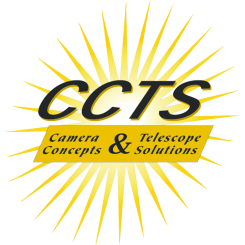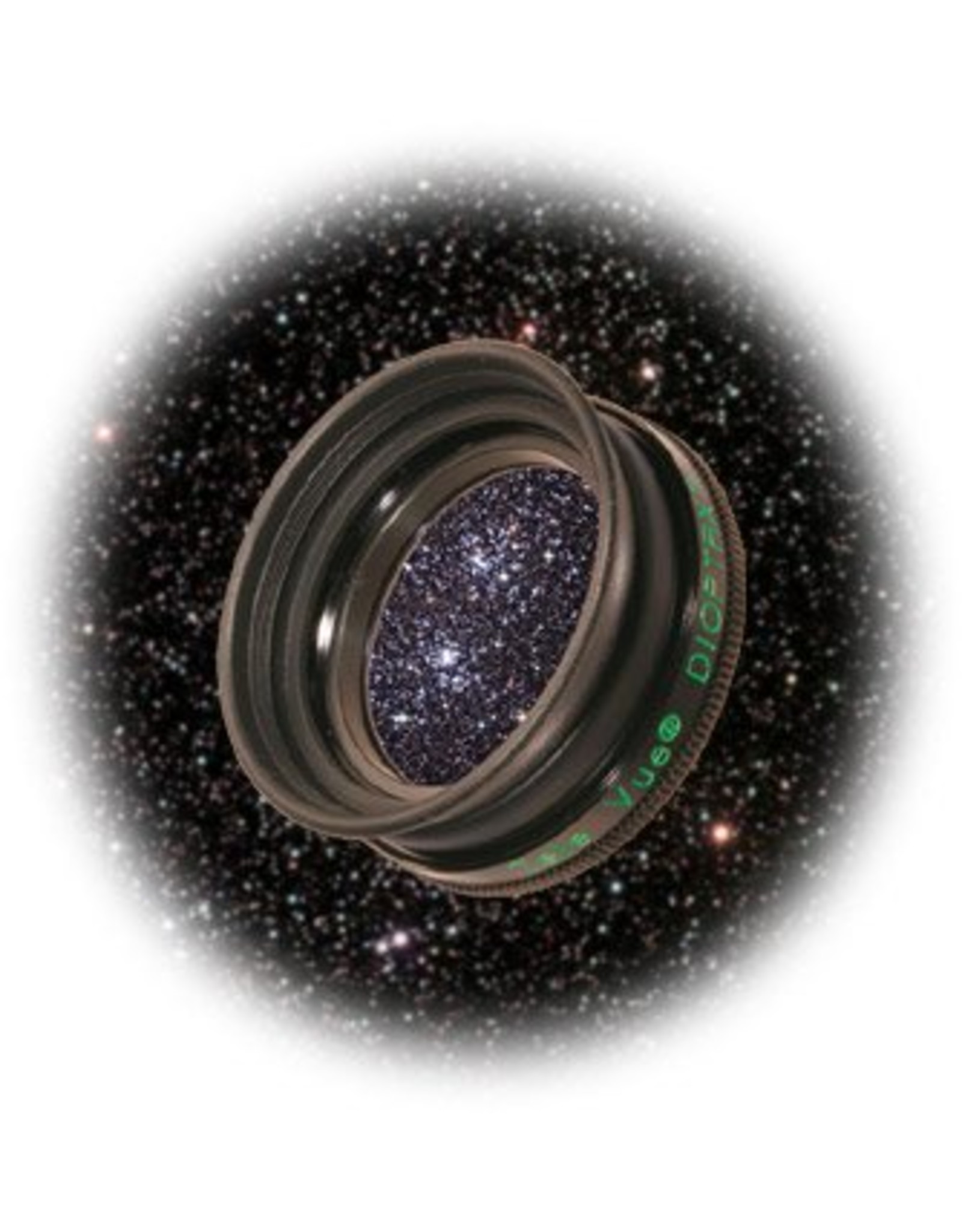Tele Vue Dioptrx (Specify Strength)
| Article number: | DRX-00XX |
| Availability: | More on the Way to us |
| Delivery time: | More on the Way to us |
* The Tele Vue Dioptrx astigmatism correcting lens assembly compensates for astigmatism.
* Employs only the finest multi-coated glass in anodized aluminum housings with rubber eye guards.
* The Tele Vue Dioptrx attaches to over 20 Televue long eye-relief eyepieces.
* Each model is rotatable for best orientation.
Got astigmatism? Get the "cure".
![]() Your telescope's focuser is used to compensate for your near- or far-sightedness; DIOPTRX™ compensates for your astigmatism. These units attach and lock onto the tops of over 20 long eye-relief Tele Vue eyepieces to achieve the sharpest full-field viewing possible. DIOPTRX™ models are available in ¼ to 3½ diopter (¼ steps from ¼ to 2½ diopters, then ½ diopter steps to 3½-diopters), and are rotatable for tuning to the best orientation. A series of engraved letters on the barrel helps to monitor orientation. Simply choose the DIOPTRX™ model that matches your eyeglass prescription for astigmatism. All lenses are multi-coated glass in anodized aluminum housings with rubber eyeguards.
Your telescope's focuser is used to compensate for your near- or far-sightedness; DIOPTRX™ compensates for your astigmatism. These units attach and lock onto the tops of over 20 long eye-relief Tele Vue eyepieces to achieve the sharpest full-field viewing possible. DIOPTRX™ models are available in ¼ to 3½ diopter (¼ steps from ¼ to 2½ diopters, then ½ diopter steps to 3½-diopters), and are rotatable for tuning to the best orientation. A series of engraved letters on the barrel helps to monitor orientation. Simply choose the DIOPTRX™ model that matches your eyeglass prescription for astigmatism. All lenses are multi-coated glass in anodized aluminum housings with rubber eyeguards.
1. You're more likely to see a sharper, higher contrast image, because:
A. The Dioptrx is always completely aligned to the eyepiece optics, eliminating aberrations from a decentered mismatch of eyeglass power and astigmatic axis.
B. Dioptrx can be rotated to exactly compensate for the astigmatic axis angle in real time, since both head angle and age can vary your eyesight astigmatic angle.
C. Dioptrx likely has better multi-coatings than eyeglasses, and certainly is better in transmission and reflection reduction than uncoated eyeglass.
D. Dioptrx is more likely to be cleaner than eyeglasses, which may have scratches and smudges from constant use and wear and tear.
E. Dioptrx allows seeing your normal maximum contrast that eyeglasses can diminish (remove your eyeglasses and see how contrast improves in normal vision).
2. You're more likely to see the full field in 100° Ethos eyepieces because your eyeglasses are more limiting in "effective eye-relief".
At Texas Star Party and RTMC Astronomy Expo in May and Cherry Springs Star Party in June (all 2005), I had the pleasure of evaluating over 100 subjects using our DIOPTRX™ astigmatism correctors to evaluate both the absolute performance and performance relative to their eyeglasses. I used a Tele Vue 60 with 60° diagonal and 32mm Plössl (5.3mm exit pupil) to view our DIOPTRX™ test chart. In a few cases, I was able to confirm the performance at night using a 35mm Panoptic and 12mm Nagler Type-4 on our TV NP-127 to view star clusters. Most subjects did not have their eyeglass prescriptions or know their eyesight astigmatism, but I have enough experience now to guess at a reasonable starting point in trying DIOPTRX™. Since we had 10 models in ¼ diopter steps of astigmatism from ¼ diopter to 2½ diopters, it was easy for subjects to find their optimum values.
Following are some general conclusions:
-
DIOPTRX™ always works at least as good as eyeglasses and mostly better.
-
People who dislike using glasses and have astigmatism are most pleased.
-
Some people are lucky enough to have no astigmatism and will not benefit from DIOPTRX™.
-
I found many people using progressive eyeglasses, which by definition are horrendous for observing with telescopes or binoculars.
-
Many people do not realize that they don't need their eyeglasses if they are near or farsighted and don't have astigmatism.
-
Critical observers easily detect as little as ¼ diopter of astigmatism.
-
DIOPTRX™ units can be stacked (one person had 5 diopters) to accommodate more than 2½ diopters astigmatism.
-
It is easy (and analogous to focusing) to "dial in" rotation of DIOPTRX™ for optimum correction. It is virtually intuitive.
-
DIOPTRX™ units are very effective in binoviewers.
-
Night tests seem to confirm no discrepancies with our daytime tests.
-
Sharper stars and detection of fainter stars are clear benefits.
-
Choosing DIOPTRX™ values based on eyeglass prescription is generally effective.
I was very gratified by the instant and positive unprompted reactions.
Your prescription may look like this, with different numbers.
| SPHERICAL | CYLINDER | AXIS | ||
| Right Eye | O.D. | +1.50 | -0.50 | 45 |
| Left Eye | O.S. | -0.50 | +1.50 | 135 |
Simply choose DIOPTRX™ to match the cylinder (astigmatism) value of your preferred viewing eye. In the example above, you would choose 0.5 diopter model for your right eye and 1.5 diopter model for your left eye.
- Ignore spherical and axis values.
- Ignore all ± signs.
Maximum pupil size decreases with age and this decrease the visibility of astigmatism. Consult the following charts.
 Eye Pupil Size vs. Age
Eye Pupil Size vs. Age Exit Pupil Size vs. Astigmatism Visibility
Exit Pupil Size vs. Astigmatism Visibility
| Plössl | 55, 40, 32mm |
| Radian | all |
| DeLite | all |
| Panoptic | 41, 35, 27, 24*, 19mm* (*requires DEA-0001 adapter) |
| Delos | all |
| Nagler Type 4 | 22, 17, 12mm |
| Nagler Type 5 | 31, 26, 20mm* (*requires DEA-0001 adapter) |
| Nagler Type 6 | all* (*requires DNA-6000 adapter) |
| Ethos | all |






